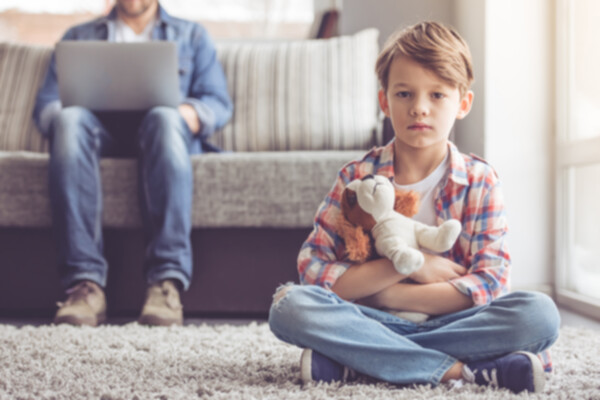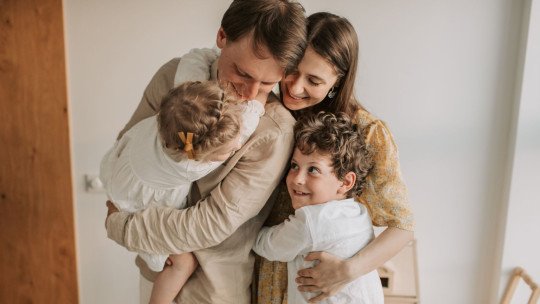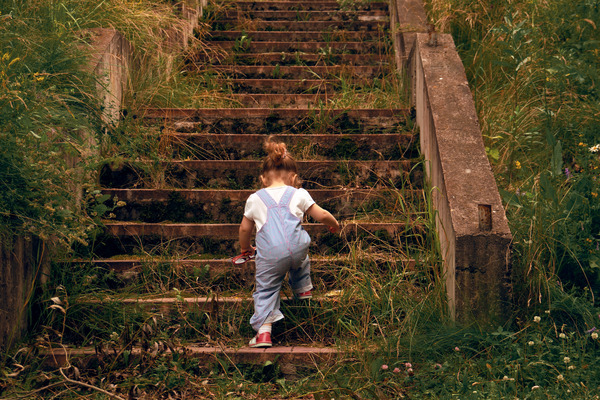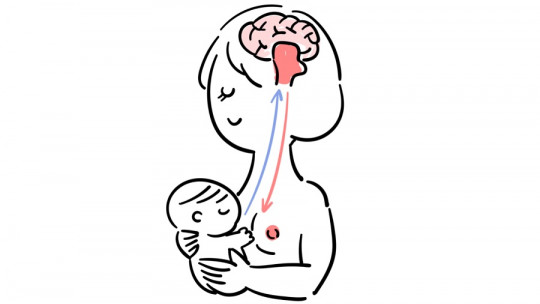How does the type of avoidant attachment affect children? How does avoidant behavior manifest itself in adults? Discover the characteristics of this attachment style and how to deal with it.

The way parents interact with their baby during the first months of their life will largely determine the type of attachment and different aspects of their personality. This bond between the primary caregiver and the baby can form different types of attachments with which the way of relating that the person will have in the future will be shaped.
When parents tune in to their baby’s sensitivity, it is very likely that the baby will develop a secure attachment. This type of attachment implies that children who have received this type of treatment, in their adulthood, will be able to regulate their emotions, will feel more secure with themselves and will be more empathetic with others. But what happens when a avoidant attachment?
What is avoidant attachment?
Parents of children with a avoidant attachment They tend to not be emotionally present or available most of the time. That is to say, they ignore a large part of their children’s needs. In these cases, parents also discourage crying and end up encouraging the children’s premature independence.
In response, the avoidantly attached child learns early in life to repress the natural desire to seek out a parent for comfort when frightened, distressed, or in pain. Therefore, by not crying or openly expressing their feelings, these parents can often partially satisfy at least one of their attachment needs, which is to remain physically close to their parents.
What behaviors are associated with avoidant attachment in children?
Children with a avoidant attachment They tend to become ‘little adults’, that is, to have more precocious and autonomous attitudes. When an infant has this type of attachment, she also has a tendency not to externally show a desire for closeness, affection or love. Despite this, they seek physical proximity to their attachment figures although they do not interact or relate directly with them.
Causes of avoidant attachment
When a child wants emotional support, parents or avoidant caregivers They often downplay or ignore their problems, encouraging them to become more independent too prematurely. Avoidant attachment parenting behavior includes the following:
- Not responding when a baby or child cries
- Actively discourage crying or punish.
- Do not outwardly show emotional reactions to problems or achievements.
- Making fun of a child’s problems
- Show annoyance at a child who is experiencing a problem
- Failure to address medical problems or nutritional needs
- Avoid visual and physical contact.
In the vast majority of cases, parents with this type of behavior are usually very young or inexperienced and can sometimes be caregivers who suffer from a mental illness. On the other hand, some children can develop these attachment styles due to adoption or parental illness, as well as experiencing divorce or the death of a parent or caregiver.

Signs of avoidant attachment in adults and children
People of any age with styles of avoidant attachment They may show symptoms of depression and anxiety. Furthermore, on many occasions they do not outwardly express the need for affection or care that they need. Some of the most significant characteristics of avoidant behavior are the following:
- Avoid physical and visual contact: People who have had an avoidant attachment with their caregivers they usually refuse physical and visual contact with their parents.
- Does not ask for help: People with this avoidant attachment style They don’t ask for help even though they need it. This is because they did not receive it as children, which means they are not used to asking for it.
- Difficulty showing or feeling your emotions: Adults with a avoidant behavior They often have difficulties both managing and expressing their own emotions.
- Fear of closeness: The avoidant personality in love, whether in friendships or relationships, usually avoids closeness at all costs. This happens because these people usually feel afraid of being hurt by others.
- Not leaning on others: Another of the characteristics of avoidant attachment is that these people do not turn to others to ask for help or to find the emotional support necessary in some situations.
He avoidant attachment It can end up psychologically affecting those who suffer from it. Thus, if you identify with this type of behavior and believe that it is affecting you, it is important to go to a professional psychologist.

What to do if we have avoidant behavior?
If you consider that you have had an avoidant attachment with your parents, and now you suffer the consequences of this type of behavior, it is important that you follow the following advice:
- Become aware of your emotions: A person who has a avoidant behavior You must learn to identify and deal in a healthy way with the emotions you experience.
- Practice healthy habits: The people with avoidant attachment They tend to neglect themselves mentally and physically. Therefore, it is valuable that you focus part of your day on practicing good habits such as sleeping enough hours, exercising regularly, eating a balanced diet, and dedicating time daily to taking care of yourself.
- Change your thought pattern: In many cases people with an avoidant attachment They tend to be very critical of themselves. To change these thoughts, it is crucial to redirect them to attitudes that are more useful to you.
He avoidant attachment It can cause many difficulties for people’s emotional control, for this reason, it is important to detect if we have this type of behavior and solve it to improve our quality of life.








